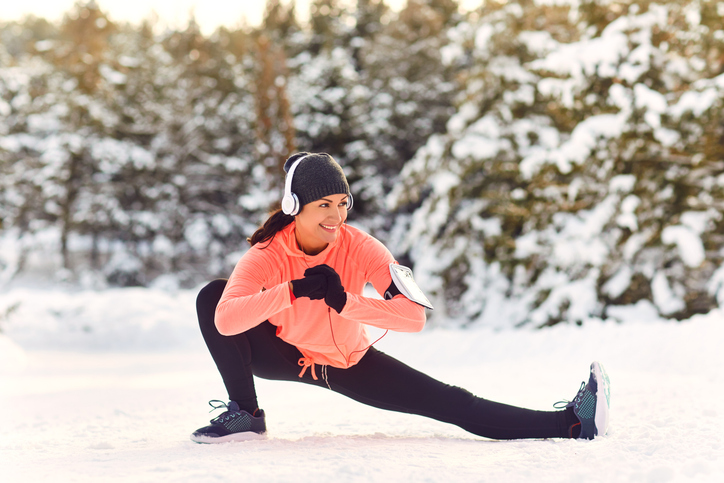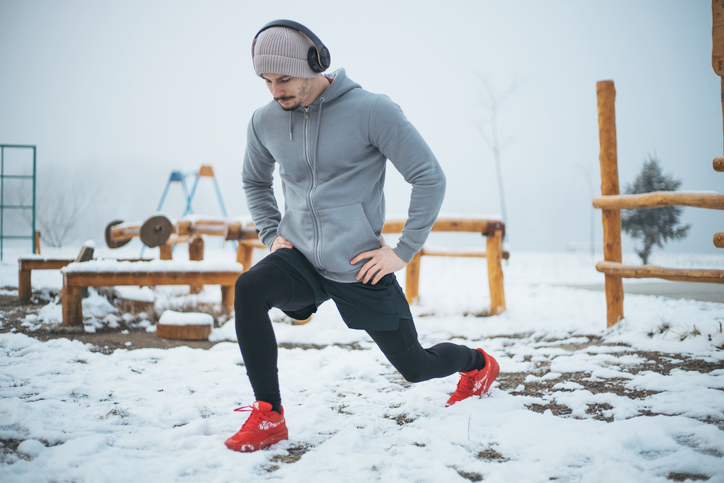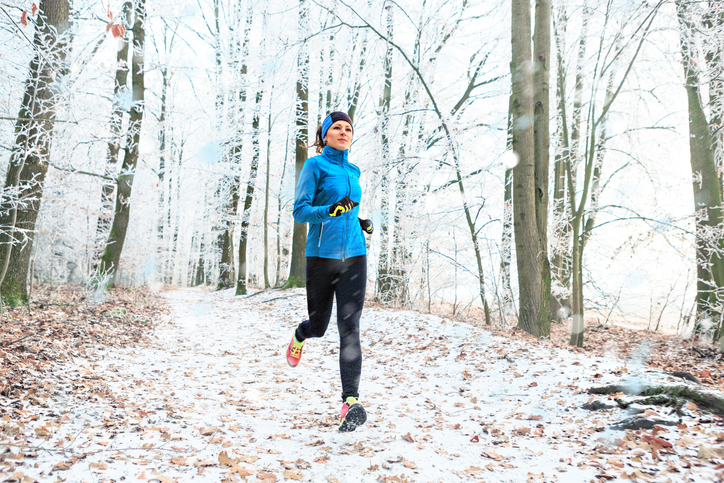Baby, it’s cold outside — but that’s no excuse to put your sneakers in hibernation. If you can get past the initial sting of arctic winter air in your face, there are a few unexpected advantages to exercising in cold weather rather than staying in the room-temperature climes of a gym. Here are a few reasons to layer up and take your workout outdoors this winter.
1. You Might Burn a Few Extra Calories
Weight tends to creep up in the chillier months, thanks to holiday feasts and let’s just-stay-on-the-couch weather. But there’s evidence that being cold can increase energy expenditure — so if you’re planning to work out, there may be some benefit to taking it outdoors.
And while you usually stop shivering pretty quickly during an outdoor workout, the act of warming up can burn calories, too. “Your body does use a considerable amount of energy to warm and humidify the air you breathe when you exercise in the cold,” says Nancy Clark, RD, CSSD, a sports nutritionist in the Boston area.
And if your winter workout involves heavy equipment — like a parka, skis, or snow shoes — you’ll also burn a few extra calories lugging that gear around, Clark adds.
2. Heading Outdoors Can Boost Your Mood

Light therapy is one of the most common treatments for seasonal affective disorder, a type of depression that’s often connected to the lack of sunlight in the dreary winter months. Spending time in the sunshine can help, and exercising outdoors may be particularly effective in managing seasonal depression symptoms.
“Exercising outside avoids the doldrums that come with the winter months,” says Tom Holland, M.S., CEO and founder of TeamHolland LLC, a fitness consulting company. And a study at the University of Essex found that “green exercise” — a.k.a. exercising in nature — can improve mood and self-esteem.
So while it may be tempting to work out indoors where it’s warm, it’s worth bundling up and braving the frigid temps.
3. It Helps You Escape the Horde
During the “new year, new me” season, you may find your usual gym or studio annoyingly overcrowded — but trails and greenways are typically less crowded in the winter. That means you don’t have to maneuver around a mob of people while you’re running, cycling, or hiking — so you can focus on your form, speed, and mileage instead.
4. It Shields You From Gym Germs

Increased attendance at gyms comes in the middle of cold and flu season — which means the shared equipment at your gym can become a petri dish. (Especially since there are always those people who don’t wipe down their equipment after using it.)
A study in the Clinical Journal of Sports Medicine found that 63 percent of exercise equipment is contaminated with rhinovirus, which is the most common cause of colds. Doesn’t that make you want some fresh air?
5. It Just Feels Good
It’s invigorating to exercise outside when the weather is brisk. Just make sure you’re dressing the part. Ideally, you’ll want to wear:
- An outer layer or shell made from a waterproof, windproof fabric like Gore-Tex to guard against wind and rain
- A middle layer of wool or fleece to act as insulation
- A synthetic base layer that wicks moisture away from your body, keeping you warm and dry
You should also take extra care with your extremities, which are most vulnerable to the effects of the cold. “You can get away with a lot of cold if your head and hands are covered,” Holland says.
Mittens are better than gloves at keeping your fingers toasty, and it may also help to invest in polypropylene socks and glove liners, which help warm the hands and feet by wicking moisture away from them.
Cold Weather Workout Tips

Feeling inspired to create an outdoor fitness regimen this winter? Here’s what you need to know to stay safe in the elements.
Wear sunscreen
“The sun can still be strong in winter, especially if you live in an area where the added reflection of the sun off of snow is a factor,” Holland says. (Snow reflects up to 80 percent of UV radiation.)
Take your time
Give your body a few extra minutes to warm up when the temperature is dipping. Start slowly, since muscles will be colder — and stiffer — at first.
Drink plenty of water
“If you’re working hard, you are going to sweat, no matter the season,” Holland says. So don’t forget to hydrate like you normally would.
Respect the weather
Freeze responsibly — if it’s brutally cold or icy outside, you can always stay inside and stream a workout. BODi offers dozens of workout programs that’ll get you strong and fit even when you can’t leave the house. Try more than 100 FREE workouts with BODi Previews.
